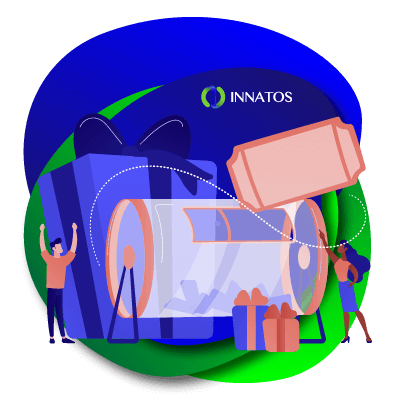20 Tactics for Gamification at Work in 2022
20 Tactics for Gamification at Work in 2022. Increasing the rate of staff engagement in your business can be hard. But we know from research that it’s important for business success. Lower levels of staff engagement have been linked to higher staff turnover rates, low morale, and decreased productivity.
One strategy many organizations have utilized is to introduce the concept of employee gamification to their workplaces to boost engagement levels.
How do you gamify employee engagement and what are the benefits?
 Gamification is a process where engagement strategies incorporate game-based elements – for example, point-scoring, competitions, or rewards – as a way of encouraging team members to be actively engaged in the workplace.
Gamification is a process where engagement strategies incorporate game-based elements – for example, point-scoring, competitions, or rewards – as a way of encouraging team members to be actively engaged in the workplace.
It’s designed to capitalize on human psychological factors that see them become competitive with one another and, in doing so, they will display drive and a willingness to learn and improve.
-
Employee gamification, 20 Tactics for Gamification at Work.
According to the 2019 Gamification at Work Survey by Talent LMS, 89% of employees said gamification made them feel more productive, while 88% said it made them feel happier at work.
Gamification at work lets your staff see, in a fun way, how they compare with their peers when it comes to working towards goals. They can participate transparently, with targets that can be measured, and receive feedback at the same time.
-
Gamification for staff engagement has been a strategy, 20 Tactics for Gamification at Work.
adopted by businesses during the COVID-19 pandemic. As the number of people working remotely has increased because of the pandemic – as well as ongoing uncertainties about health and safety, vaccinations, and economic pressures. In these times, more than ever, maintaining a sense of community within your organization while everyone is working apart, is like a glue that keeps everything together.
Ways to introduce gamification in your employee engagement strategy
 Gamification for employee engagement. The Talent LMS survey found that badges were the most common gamification element (71%) with 59% saying they were granted points via an app or software, 56% were awarded virtual or physical rewards for their accomplishments and 51% were put on a leaderboard.
Gamification for employee engagement. The Talent LMS survey found that badges were the most common gamification element (71%) with 59% saying they were granted points via an app or software, 56% were awarded virtual or physical rewards for their accomplishments and 51% were put on a leaderboard.
For a gamification program for staff engagement to be successful, the goal needs to be clearly defined, the ways the staff will participate needs to be fully understood, it should be well designed to cater for a favorable user experience, it should be fun, If you can’t get these foundation elements right, the gamification concept will not work: people won’t participate willingly in something that feels like torture.
If you’re unsure where to start, here are some examples of gamification in the workplace to get you inspired:
-
Trivia competitions, 20 Tactics for Gamification at Work.
A weekly or monthly event that quizzes employees either as individuals or teams on your company’s values, with prizes for the most engaged employees.
-
Incorporated in training programs.
If you have low uptake of corporate training initiatives you can introduce a system that relies on staff completing missions, getting points, and having their points on a leaderboard.
-
A point system that rewards employees who meet compliance targets.
Particularly useful if you have had poor outcomes in this area in the past.
-
Create a custom app for your sales team, 20 Tactics for Gamification at Work.
When you have a sales force that’s often out on the road, they can check their performance against their peers by seeing their results on an app. With a reward system, they can be inspired to achieve more to take out the prize.
-
Offer rewards for employees who hit their KPIs.
In some businesses, there’s little incentive to meet goals. An engagement gamification incentive can be the difference between KPIs being met or not.
-
Have teams compete for badges on your online team platforms.
This can be for anything you’d like to see improved, from remembering to turn lights off at the end of the day to completing monthly expense reports on time.
-
Use gamification to encourage knowledge sharing, 20 Tactics for Gamification at Work.
You can do this by awarding points to people who answer their colleagues’ questions on forums on your intranet and filling out the information on company wiki pages. This encourages knowledge to be shared so that it isn’t hidden.
-
Have a charity as a reward.
Already in many workplaces, staff gets together to raise money for charities and causes they collectively believe in. You can introduce a staff gamification system to improve different behaviors within your business all points being turned into dollars for a specific charity or cause.
-
Gamify data management, 20 Tactics for Gamification at Work.
If you’re a big business that’s been online for a while now or has a vast intranet archive, a lot of your data may be out of date, mislabeled, or irrelevant. It’s a huge project to fix that you might not have the time to cover. By turning your staff into data management champions and gamifying the process.
-
Incorporate it in the recruitment process.
In addition to gamification to employee engagement, some businesses and government organizations have games on their websites that allow would-be employees – people interested in following a career path in that industry – to role play to determine if it’s something that they’d be good at and pursue further.
-
Gamify the onboarding process, 20 Tactics for Gamification at Work.
The tasks that recruits have to complete to be successfully onboarded in some companies can be extremely dull. While you can tick a box and say the employee completed the tasks, did the information get retained? Gamification can help you to impart information on a range of topics.
-
Set up real-life scenes for training.
Instead of walking people through the job requirements on paper, have a dedicated space where you can run mock scenarios that look like what they will be exposed to, and then test them in a fun way in the procedures, they need to carry out.
-
Foster leadership, 20 Tactics for Gamification at Work.
Apps and games can show your company leaders or aspiring leaders just how good they are at leading and inspiring people. This can be a gentle way for these employees to find out they need to sharpen up some of their people skills.
-
Face-to-face team games.
In weekly team meetings, you can encourage your team members to nominate someone for having done a job well and give their reasons for doing so. If one particular team member is outstanding that week with the most nominations they can win a reward. It’s also great that your employees will get positive feedback from their peers.
-
Collect stamps, 20 Tactics for Gamification at Work.
All sorts of loyalty programs run by retailers work this way, such as coffee shops, so people are used to the concept. Employees can collect stamps for different tasks they’ve done well and at the end, they receive a reward.
-
Collect cards.
This one works similarly to the trading card concept (for example baseball cards) and employees can work towards collecting an entire set for various tasks they’ve undertaken.
-
Raffle tickets.
These can be real tickets or virtual ones. Set rules to earn an entry ticket for a prize every time an employee takes a particular action.
-
Be competitive with workloads, 20 Tactics for Gamification at Work.
When you have teams who perform similar roles in different locations you may notice their performance results are very different. By introducing competition you can let them track progress against one another.
To make your gamification efforts easier and more effective, you may consider using a digital tool like DeskAlerts, which allows you to send messages in the form of pop-ups, surveys, quizzes, screensavers, and wallpapers, videos, etc right to employees’ devices.
-
Try an intranet scavenger hunt, 20 Tactics for Gamification at Work.
Your intranet can be a source of a lot of information that in and of itself can help to boost engagement. But if people aren’t looking at it regularly or are unaware of the types of information that might be there, they are missing out. You can send employees a quiz that is designed to get them to look for answers on the intranet, better familiarising them with the content that you produce and place there.
-
Gamifying ideas and innovation, 20 Tactics for Gamification at Work.
Incorporate awarding points to employees who provide ideas that management selects to implement within the organization or rank the staff on a leaderboard who have shared the most ideas.
Paul’s real-life story of gamification in the workplace
Paul is a change management professional in a large healthcare organization in the UK. His company recently underwent a major change, implementing a new records management system that replaced another system that employees had been using for over 40 years. We thought his story was one of the best examples of gamification in the workplace.
“We introduced a new patient management app that cost 30 million pounds. The app had a lot of elements to it, and there was a lot of training we needed employees to do.
We started with a simple call to action, but then in the second phase of the project, we had to get creative with what we needed to do. We needed our employees to be able to record where they were in terms of their journey.
We created a training passport… it was shaped like a passport, and 16 pages. Every time a training topic was ticked off, the employee got a stamp.
It introduced an element of competition within teams. Nobody wanted the rest of their team to do better than them.
The third phase of the project was being more direct with people and telling them they had a deadline to comply, and that they wouldn’t be able to work and would be sent home – but only about 5 or 10% of employees fit this category.
We were tracking the progress. By recycling the message and being consistent, with the training passport we found that people were happy to get on board with the messaging.”















thanks for info